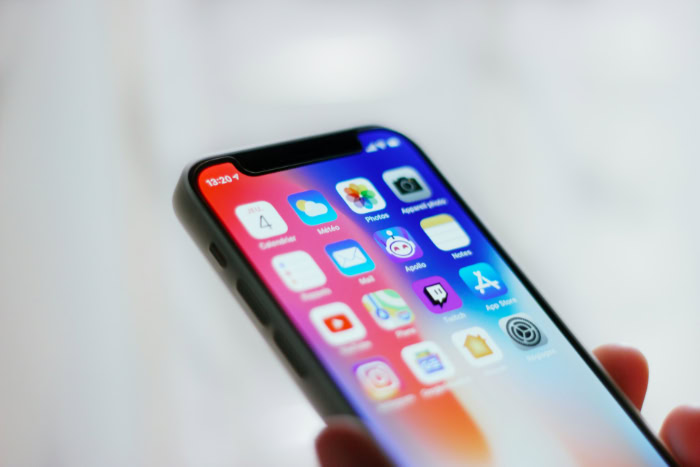Is 128GB Enough Storage for Your Phone? How to Decide

The moment you select a new phone, the storage capacity decision feels final. Modern phones are powerful tools for creation and entertainment, but high-resolution photos, 4K videos, and massive games quickly consume space.
The 128GB model often presents itself as the sensible, middle-ground choice. So, when is that capacity a cost-effective sweet spot, and when does it become a frustrating limitation over the life of your device? Answering that requires looking at what 128GB really holds, matching it to your habits, and knowing when to aim for more from the start.
What 128GB Actually Holds
The 128 gigabytes advertised on the box is a starting point, not the actual space available for your files. From the moment you turn on a new phone, a portion of that storage is already claimed by the operating system, pre-installed applications, and files the device needs to function properly.
This distinction between advertised and usable capacity is critical to figuring out if 128GB will meet your needs.
Advertised vs. Usable Space
A new 128GB phone does not provide you with 128GB of empty space. The device's operating system, such as iOS or Android, can occupy anywhere from 15GB to over 25GB on its own.
On top of that, pre-loaded manufacturer and carrier apps consume additional gigabytes, meaning the true usable storage often falls between 100GB and 113GB before you have even installed your first app.
Real-World Capacity
With roughly 110GB of usable space, you have a finite amount of room for your digital life. This capacity could hold approximately 27,500 photos, assuming an average size of 4MB per picture.
For video, it equates to about 2.7 hours of 4K footage filmed at 60 frames per second or around 18 hours of 1080p video. If music is your priority, you could store tens of thousands of songs.
However, large mobile games can easily exceed 10GB each, meaning just a few titles could claim a significant portion of your storage.
The Slow Squeeze Over Time
Your available storage is not static; it gradually shrinks over the years. Major operating system updates require significant space to download and install, and even after installation, the system's footprint tends to grow.
Likewise, the apps you use accumulate cached data and increase in size with each update, a phenomenon sometimes called “software bloat”. This slow but steady consumption of free space means the 128GB that feels spacious on day one can become tight within a couple of years.
Matching Storage to Your User Profile

The ideal amount of phone storage is not a universal number; it depends entirely on your daily habits and how you interact with your device. By identifying which user profile best describes you, it becomes much clearer whether 128GB is a perfect fit or a potential bottleneck.
The Light User
If your phone is primarily a tool for communication and light entertainment, 128GB is almost certainly more than enough space. This user mainly sends messages, browses social media, streams music and videos, and takes photos from time to time.
Because most of their content lives in the cloud, they do not store large files locally. For this group, a 128GB model is a cost-effective choice that provides ample room with no need for active storage management.
The Average User
This profile describes a large portion of smartphone owners who engage more actively with their devices. An average user takes photos and videos regularly, maintains a healthy collection of apps, and might download music playlists or a few movies for offline access.
For these individuals, 128GB can be sufficient, but it requires some awareness. Over a two to three-year period, they may find themselves needing to clear out old files or offload photos to a cloud service to free up space.
The Power User and Creator
Power users and content creators will find that 128GB quickly becomes restrictive. This group includes mobile gamers who install large, graphically demanding titles, vloggers shooting hours of 4K video, and photographers who capture high-resolution images.
The constant need to delete apps, videos, and other files to make room for new ones can be a significant frustration. These users should view 256GB as a more practical starting point to support their hobbies and creative workflows without constantly managing storage limits.
What Fills Storage the Fastest?
Even with a seemingly generous amount of space, certain activities consume storage far more quickly than others. A 128GB capacity can feel limitless one month and critically low the next, depending on your usage.
The three primary culprits behind rapid storage depletion are typically your phone’s camera, large applications and games, and media downloaded for offline use.
High-Resolution Photos and Videos
The camera is often the single biggest consumer of storage on a modern phone. While a standard photo might only take up 3-5MB, shooting in high-resolution or RAW formats can increase that size significantly.
Video has an even greater impact; recording in 4K resolution at 60 frames per second can use over 700MB for just one minute of footage. Features like slow-motion and cinematic modes also produce larger files, meaning a few vacation videos or a child’s sporting event can quickly consume tens of gigabytes.
Large Apps and Games
The size of mobile applications, especially games, has grown immensely. A single flagship game title like Genshin Impact can demand more than 30GB of storage after all its resources and updates are downloaded, while another popular title like Call of Duty: Mobile can easily consume over 15GB with all assets installed.
It is not just games, either; professional-grade creative apps for video editing or digital art can also be very large. Even productivity tools can take up surprising amounts of space, such as when downloading offline map data for an entire state or country, which can reserve several gigabytes on your device.
Downloaded Media for Offline Use
Saving content for offline access is a convenient feature that comes at the cost of storage. Downloading a single season of a show from Netflix or another streaming service in high definition can easily occupy 10GB or more.
Similarly, creating an extensive offline music library on platforms like Spotify or Apple Music can claim another 15-20GB if you save thousands of songs in high quality. This saved media, from movies and shows to podcasts and audiobooks, adds up quickly and can crowd a 128GB device if left unmanaged.
How to Make 128GB Work

Choosing a 128GB phone does not have to mean constantly worrying about running out of space. With a combination of smart tools and consistent habits, you can comfortably manage your storage and keep your device running smoothly.
These strategies focus on moving non-essential files elsewhere and cleaning up digital clutter before it becomes a problem.
Leverage Cloud Services
Cloud storage is one of the most effective ways to preserve local space on your phone. Services like Apple's iCloud, Google Photos, and Microsoft OneDrive can automatically back up your photos and videos to the cloud.
Once uploaded, you can use the “Optimize Storage” feature, which keeps smaller, low-resolution versions on your device while the full-quality originals are stored securely online. This single step can free up dozens of gigabytes, leaving your phone's internal storage available for apps and other essential files.
Use External and Expandable Storage
For certain devices, physical storage expansion remains a viable option. Many Android phones still include a microSD card slot, allowing you to add hundreds of gigabytes of storage for photos, videos, and even some apps at a low cost.
Even for phones without a card slot, like iPhones, external drives are now more practical than ever. A small USB-C flash drive or a wireless hard drive lets you quickly offload large files, such as 4K video projects or entire photo libraries, for backup or transport.
Develop Better Storage Habits
Proactive management is key to keeping a 128GB device feeling spacious. Make it a routine to periodically review and delete what you no longer need.
This includes uninstalling apps you have not used in months, clearing out downloaded shows from streaming services after you have watched them, and deleting old files from your downloads folder. Both iOS and Android have built-in storage management tools in their settings that show you exactly what is consuming your space and offer recommendations for clearing cache and removing old files.
When to Choose More Than 128GB
While it is possible to make 128GB work with careful management, for many people, opting for a larger capacity from the start is the better decision. Paying a bit more upfront for 256GB or even 512GB can provide peace of mind and prevent the constant hassle of managing a nearly full device.
Certain usage patterns and ownership plans almost always benefit from having more onboard storage.
Planning for the Long Term
If you intend to keep your smartphone for three years or longer, starting with more storage is a wise investment. Over time, the operating system will grow, apps will become larger, and your collection of photos and videos will expand.
A 128GB phone that feels spacious at first can become cramped by its third year, forcing you into a cycle of deleting files and offloading data. Choosing a 256GB model provides a comfortable buffer that accommodates this natural growth, reducing future frustration.
High-Demand Scenarios
Some activities are simply not well-suited for a 128GB device. Content creators who regularly shoot 4K video will find that they can fill 128GB in a single afternoon of filming.
Frequent travelers who depend on downloaded maps, movies, and music for offline access will also hit the limit quickly. Likewise, avid mobile gamers who want to have several large, graphically-intensive titles installed simultaneously will find 128GB to be a significant constraint.
Cost Versus Value
The price difference between a 128GB and a 256GB model, typically around one hundred dollars, can seem like a lot. However, it is helpful to view this cost as paying for convenience and a better user experience.
That extra investment frees you from relying heavily on cloud subscriptions, saves you from the tedious task of constant storage management, and can even lead to a higher resale value when you eventually upgrade. For many, the long-term benefits of avoiding a full-storage notification are well worth the initial price jump.
Conclusion
In the end, 128GB of storage sits in a balanced position, offering a perfectly comfortable experience for many users. For light to average use, especially when paired with cloud services and good digital habits, it provides plenty of space without a significant cost increase.
However, for power users, content creators, or anyone planning to keep their phone for several years, this capacity can quickly become a restrictive ceiling, leading to constant management and compromise.
The best decision comes from an honest assessment of your personal needs, not just the price tag. Consider how you use your phone today and, more importantly, how you see yourself using it two or three years from now.
Making a thoughtful choice at the time of purchase will help you avoid the dual pitfalls of overpaying for capacity you will never use or running out of space just when you need it most.


